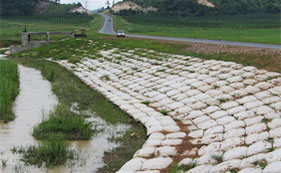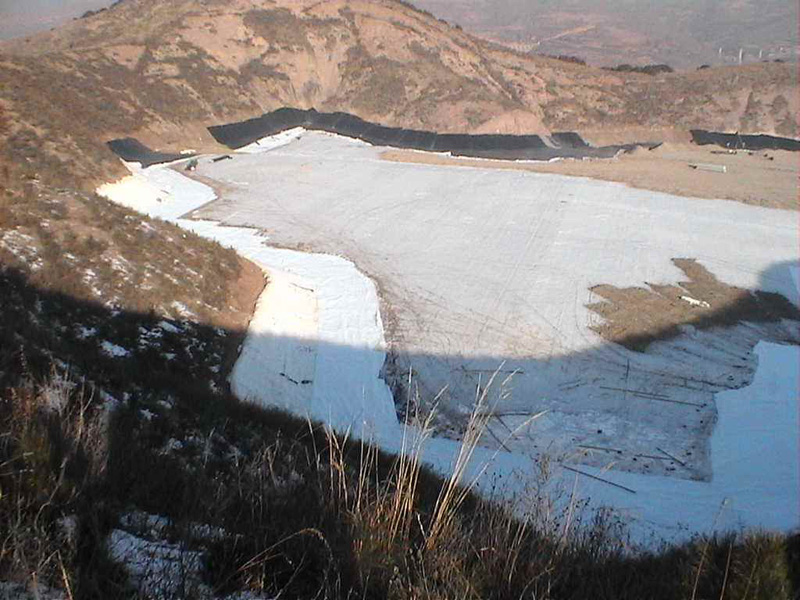
 Back to List
Back to List
Composite geomembrane (composite anti-seepage membrane) is divided into one cloth and one membrane, one cloth and two membranes, two cloths and one membrane, and multiple cloth and multiple membranes, with a width of 2-6m and a length of 50-100m (or according to user requirements), and the weight is 200— 1500g/㎡, high index of physical and mechanical functions such as tensile, tear resistance, bursting, etc., with high strength, good extension function, large deformation modulus, acid and alkali resistance, corrosion resistance, aging resistance, good anti-seepage function and other characteristics. It can meet the needs of water conservancy, municipal administration, construction, transportation, subway, tunnel and agricultural irrigation, aquaculture, vegetable planting and other aspects of engineering. Because of the selection of polymer materials and the addition of anti-aging agents in the production process, it can be used in unconventional temperature environments. It is often used in the anti-seepage treatment of artificial lakes, reservoirs, reservoirs, dams, drainage ditches, etc., and the anti-fouling treatment of waste yards.

Composite geomembrane product specifications:
1. One cloth and one film Base cloth: 100-1000g/m2 Film thickness: 0.1-1.5mm
2. Two cloths and one film Base cloth: 80-600g/m2 Film thickness: 0.2-1.5mm
3. One cloth and two films Base cloth: 100-1000g/m2 Film thickness: 0.1-0.8mm
4. Multi-fabric and multi-film Base fabric: 100-1000g/m2 Film thickness: 0.1-0.8mm
Construction method:
In the construction of composite geomembrane, first use sand or clay with a smaller diameter to level the base surface, and then lay the geomembrane. The geomembrane should not be stretched too tightly, the two ends buried in the soil body are corrugated, and finally a layer of about 10cm transition layer is laid on the geomembrane with fine sand or clay. A 20-30cm block stone (or prefabricated concrete block) is built as an anti-scour protective layer. During construction, efforts should be made to prevent stones from directly hitting the geomembrane, and it is best to construct the protective layer while laying the membrane. The connection between the composite geomembrane and the surrounding structures should be anchored by expansion bolts and steel plate battens, and the connection parts should be painted with emulsified asphalt (thickness 2mm) to prevent leakage.
Before welding the composite geomembrane, use a hair dryer to blow off the sand, soil and other dirt on the membrane surface to ensure that the membrane surface is clean, and place a long wooden board under the welding part, so that the welding machine can walk on the flat base surface and ensure the welding quality. , Before the formal welding, test welding is carried out according to the construction temperature to determine the walking speed and welding temperature. Generally, the walking speed is 1.5 ~ 2.5m/s, and the welding temperature is 220 ~ 3000C. Two splicing welds, each 10mm wide, leave a 10mm cavity between the two welds, use this cavity to check the quality of the welds.
The joint treatment of composite geomembrane is a key process, which directly affects the anti-seepage effect. The general seam methods are: ① lap joint: the lap width should be greater than 15cm; ② heat welding: suitable for slightly thicker geomembrane substrates, and the weld lap width should not be less than 5cm. (Gluing is not recommended, long-term water immersion Easy to open glue, poor anti-seepage effect.)